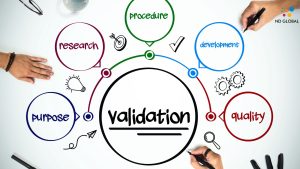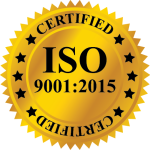INTRODUCTION: A crucial component of CAPA procedures in the pharmaceutical sector is root cause analysis (RCA). The goal of root cause analysis (RCA), a methodical technique used to research, is to identify the underlying reason for a detected non-conformity or other unpleasant circumstance. CAPA procedures can enhance the performance of both the product and the process by locating and removing the core cause of quality issues. Corrective and Preventive Action is referred to as CAPA. According to ICH Q10, it is a crucial component of the pharmaceutical quality system, combining good manufacturing practice (GMP) concepts and quality management. Product and process improvements and improved understanding of products and processes are expected outcomes of the CAPA technique. CAPA is a source of competitive advantage and a necessary condition for compliance. Authorities in oversight anticipate that producers will have a risk-based CAPA system that can quickly and efficiently identify, evaluate, address, and avoid quality problems. Because it assists in determining the actual source of an issue rather than just addressing its symptoms, root cause analysis (RCA) is crucial to CAPA procedures. Additionally, if a problem is potential, RCA can help stop it from happening at all or from happening again in the future. Further, RCA can assist in lowering expenses, increasing safety, boosting customer satisfaction, and promoting a quality-conscious culture inside the company.
The practice of root cause analysis helps comprehend and resolve issues. Root Cause Analysis is a vital tool that helps conduct a thorough, system-wide examination of major problems, incidents, and contributing variables. One method that can assist in determining why the issue initially arose is called Root Cause Analysis, or RCA. The goal of root cause analysis is to locate the source of an issue. It employs a particular set of procedures to identify the root cause of the issue, enabling you to ascertain what went wrong, why it occurred, and what needs to be done to lessen the possibility that it will occur again.
PRINCIPALS:
- Treating a problem or event’s symptoms is not as successful as focusing on corrective actions for its underlying causes.
- It works best when RCA uses a methodical approach and data-supported conclusions.
- An issue or occurrence typically has more than one root cause.
- Investigation and analysis based on problem identification center on WHY the incident happened rather than who made a mistake.
THREE CATEGORIES OF CAUSES:
- Physical Factors: Physical causes are not errors caused by humans. These causes result from issues with the system’s physical parts. Tangible things and materials failed somehow (a water intrusion alarm, for instance). Here are a few cases of physical reasons:
- Hardware malfunction. (This is one of the most common primary reasons).
- Server failure causes the software to stop functioning.
- The purchased materials don’t match the product.
- Causes by Humans: Human causes are, as the name implies, human errors that result in physical causes. Human error causes results when someone makes a mistake or needs to complete a task. People either committed a mistake or neglected to take necessary action. Physical reasons usually result from human causes (e.g., the sensor failed because no one examined the alert circuit). For example:
- It was a development error in the code.
- The guy needed to gain the necessary skill set to complete a specific assignment.
- Someone needed to learn more about the instrument.
- Causes inside the Organisation: A flawed system, procedure, or policy affects how individuals make decisions or carry out their tasks (for instance, someone else was in charge of sensor maintenance. Therefore, everyone assumed someone else had checked). Not every choice made by the organization has to be the best one. Organizations might occasionally be held accountable for an issue as well. Examples of organizational causes include the following:
- The manager should have directed his staff with their instructions.
- Someone else was chosen to complete a task.
- The tools needed to complete a job were scarce.
Root Cause Analysis (RCA) stands for thorough examination, appraisal, and remediation. Root Cause Analysis can be done using a variety of investigative techniques.
STEPS OF ROOT CAUSE ANALYSIS:
1.Describe the Issue: When conducting a root cause analysis, the current state of affairs must be examined. Here, the group determines the elements influencing the troubling occurrence. This stage produces a statement that includes the particular issue. The problem definition is the responsibility of a small team. A study team member who evaluates and examines the circumstance maybe this. At this early stage, the question that needs to be addressed is:
- What is the issue?
- What impact does the issue have on client needs?
- What do you observe taking place?
- Which particular symptoms are present?
2.Collect Data about the Problem: Gathering pertinent information about an incident or problematic event is a crucial first step in root cause analysis. Keeping a record of every detail and feature of the event will assist you in responding to inquiries such as :
- Which variables contributed? When did the issue start to happen?
- Does it happen again? What effect has been seen?
- What evidence do you have about the existence of the issue?
- What is the duration of the issue?
- What effect does the issue have?
3.Determine Potential Causal Factors: A sequence of events must be created to determine the causal elements contributing to the observed problem or incident. The project team assigned to the problem analysis should create a timeline of events and use “Why?” queries to generate as many possible causal elements as possible. For example, a causal graph makes it easier to describe the relationship between events visually and makes root cause analysis possible.
- What series of actions results in the issue?
- What circumstances make the issue possible?
- What other issues are there when the main problem arises?
4.Determine the Primary Cause(s): Now is the moment to find as many reasons as possible. The analysis team can identify the main contributing elements and a probable underlying cause or causes of the issue using methods like the Pareto chart, Fishbone analysis, and the Five Whys. Stakeholders and other pertinent teams ought to be included in this step.
- Why is there a causal factor?
- What is the actual cause of the issue?
5.Put the Causes First: After the underlying reasons are identified, they must be addressed in order of priority. The analytical team must evaluate the cause’s impact; the more significant the effect, the higher the importance of that cause or problem. This will help them decide which to tackle first. The number of causative elements that a particular challenge triggers is another consideration for prioritizing root causes; the more causal factors there are, the more significant the root cause is and the sooner it may be addressed.
- What steps can you take to ensure that the issue doesn’t arise again?
- How will the fix be put into practice?
- Who is going to pay for it?
- What dangers come with putting the solution into practice?
6.Resolution, Suggestion, and Execution: After determining the underlying causes of the issue and ranking them, the following stage is to identify potential solutions and put them into action. Brainstorming might help you try to generate a wide range of possible solutions. Interviewing as many people as you can is an additional strategy. Everyone must participate in the solution’s implementation and the feedback-gathering process. While every suggestion is essential, the best execution is the one that sticks with all those involved.
TYPES OF ANALYSIS FOR ROOT CAUSES:
a) The Brainstorming Method: A brainstorming session is used to identify a problem’s core cause. To produce a wide range of ideas and potential solutions, a group of people with appropriate knowledge and experience are brought together for the brainstorming process. This is a creative problem-solving technique that enables people to generate proposals or ideas that may be able to resolve the issue or help find its underlying cause.
- The cross-functional team may be called into a meeting to determine the underlying reason for such a brainstorming session.
- To identify the problem’s core cause and find a solution, pertinent parties will be invited to consider the issue and offer their opinions.
- Every opinion and recommendation will be examined to determine the issue’s root.
b) Ishikawa/Fishbone Diagram: The fishbone shows a wide range of potential reasons why an impact or issue could exist. The Fishbone diagram identifies the issue’s valid reasons, showing the problem’s possible cause. This tool falls under the six categories of measurement: mother nature, man, materials, and machine method. Herein are the primary 6M causes:
- Man: Those in charge of the procedure or task involved.
- Materials: Items, components, and raw materials utilized or included in the activity or process.
- Method: It comprises all guidelines, policies, rules, regulations, and particular requirements relevant to the task.
- Measurements: Information gathered during a procedure used to gauge the caliber of goods produced.
- Machines: Any tool or piece of equipment used in the procedure or activity.
- Mother nature: This refers to the surrounding environmental factors, such as humidity, temperature, and pressure difference, as well as the culture in which the action or process is carried out.
c) 1H and 5W Methods
- Five Ws and one H (W1H) is a technique for formulating inquiry-based inquiries concerning a procedure or issue being addressed for enhancement.
- The four Ws—who, what, where, and when—and the one H is utilized to understand specifics, evaluate conclusions and judgments to arrive at the essential facts, and apply guiding words to reach abstractions.
- To delve further and find the root of an issue, the last W, or why, is frequently questioned five times.
- The Six Sigma 5W1H describes the methodology used to comprehend and evaluate the project, process, or issue for improvement precisely.
d) CAPA stands for Corrective and Preventive Action.
- REMEDIAL MEASUREMENTS – It is a progression of the root cause investigation. CA’s primary objective is finding the underlying cause, base event, or error that came before the issue. Targeting the mistake or underlying cause is the second objective.
- ACTION PREVENTIVE – It is comparable to Read Across/Lessons Learned. PA is similar to the Design for Six Sigma (DFSS) replication activity. Yokaten, a Japanese phrase adopted by Toyota to describe sharing within the organization, is another PA in the business. Notifying an organization and preventing the issue from spreading to other facilities, lines, or goods is the main objective of PA.
e) Diagrams of Affinity: Affinity diagrams are the last technique used in root cause analysis. An affinity diagram, frequently the result of a brainstorming session, can produce, arrange, and compile data on the problem. Once concepts have been made, the main reasons can be determined by classifying them based on how similar they are. It is best to utilize an affinity diagram to start a conversation about a problem or issue and provide opportunities for advancement or resolution.
f) Pareto chart: A Pareto chart organizes the frequency or expense of various problems to demonstrate their relative relevance by combining a line graph and a histogram or bar chart. Whereas the line displays the cumulative percentage or total as it moves from left to right, the bars show frequency in decreasing order. One of the seven fundamental quality instruments that Joseph Juran, the pioneer of quality, listed is the Pareto chart. Pareto’s law, commonly known as the 80/20 rule, states that 20% of inputs determine 80% of outcomes. This law serves as the foundation for Pareto charts. Naturally, asking why more than five times could be necessary to fix the issue; the idea is to work your way down to the underlying source of the problem.
g) Analysis of Failure Modes and Effects (FMEA): FMEA is a well-defined tool that may pinpoint different ways a system or process can fail. In many businesses, the team is expected to analyze any previous FMEAs related to the issue if a significant problem is found in the product or process. The group should ascertain whether the issue or failure’s consequence was noted in the FMEA and, if so, how precisely the risk was assessed. If the problem is not covered in the FMEA, the group should add any relevant details and carry out the subsequent actions:
- List the current issue as a way that the process or design has failed.
- Define the problem’s severity or the failure’s effect to determine the impact of the failure.
- Enumerate every likely reason and the frequency of each occurrence.
- Examine the process flow or process diagram while examining a process FMEA to assist in identifying the underlying cause.
- Next, locate the nearest point where the root cause could have been found but wasn’t, known as the Escape Point.
- Any controls to stop or identify the issue should be documented.
- Give each suggested action an owner and a deadline, and list any other steps that might be taken to stop this issue from happening again.
- Transfer any identified acts to the RCA’s countermeasure initiative.
You must carefully carry out the process’s initial steps to ascertain the best strategy for locating an issue’s core cause. You will be able to identify the problem and the variables that contribute to it by posing pertinent questions and obtaining important information about the incident. The best method for doing a root cause analysis will depend on several aspects, including the variety and quantity of discovered causal elements, their relationships, the necessity for deduction, etc.
Conclusion: Root Cause Analysis (RCA) is crucial in the pharmaceutical sector, especially within Corrective and Preventive Action (CAPA) procedures. As outlined in ICH Q10, RCA is integral to the pharmaceutical quality system, integrating principles of good manufacturing practice (GMP) and quality management. The effectiveness of RCA lies in its ability to uncover problem sources and drive sustainable solutions. By embracing a thorough approach, pharmaceutical companies ensure compliance, achieve continuous improvement, reduce costs, enhance safety, increase customer satisfaction, and establish a quality-driven organizational culture.
How ND Global can help – ND Global provides root cause analysis (RCA) services to its clients in the pharmaceutical sector. We implement the following strategies:
- Expert Consultation: ND Global offers expert consultation services to clients to help them establish effective RCA processes. This involves guiding best practices, regulatory requirements, and industry standards related to RCA in the pharmaceutical sector.
- Customized RCA Framework Development: ND Global works with clients to develop customized RCA frameworks tailored to their needs and requirements. This includes designing step-by-step procedures, documentation templates, and tools for conducting RCA effectively.
- Technology Solutions Integration: ND Global can assist clients in integrating technology solutions for RCA, such as software platforms and digital tools, to streamline the RCA process, improve data collection and analysis, and facilitate collaboration among team members.
- Continuous Improvement Support: ND Global offers ongoing support and guidance to clients in implementing RCA processes, analyzing RCA findings, and implementing corrective and preventive actions. This includes conducting regular reviews and evaluations to identify areas for improvement and optimization.
- Compliance Assurance: ND Global helps clients ensure their RCA processes comply with relevant regulatory requirements, including those outlined in ICH Q10 and other applicable guidelines. This involves conducting audits, assessments, and reviews to verify compliance and address non-conformities.
- Knowledge Sharing and Best Practices: ND Global facilitates knowledge sharing and best practice dissemination among clients within the pharmaceutical sector. This includes organizing conferences, seminars, and networking events where clients can learn from each other’s experiences and exchange insights and lessons learned in RCA implementation.










